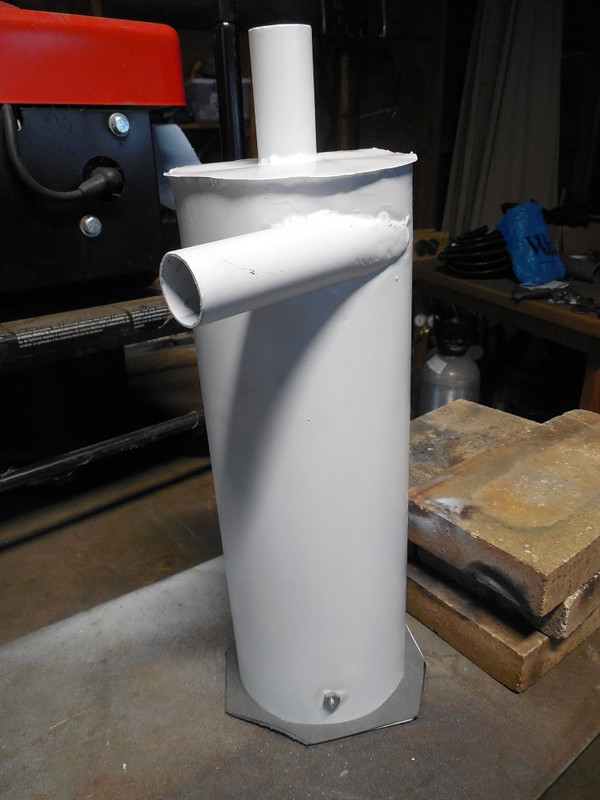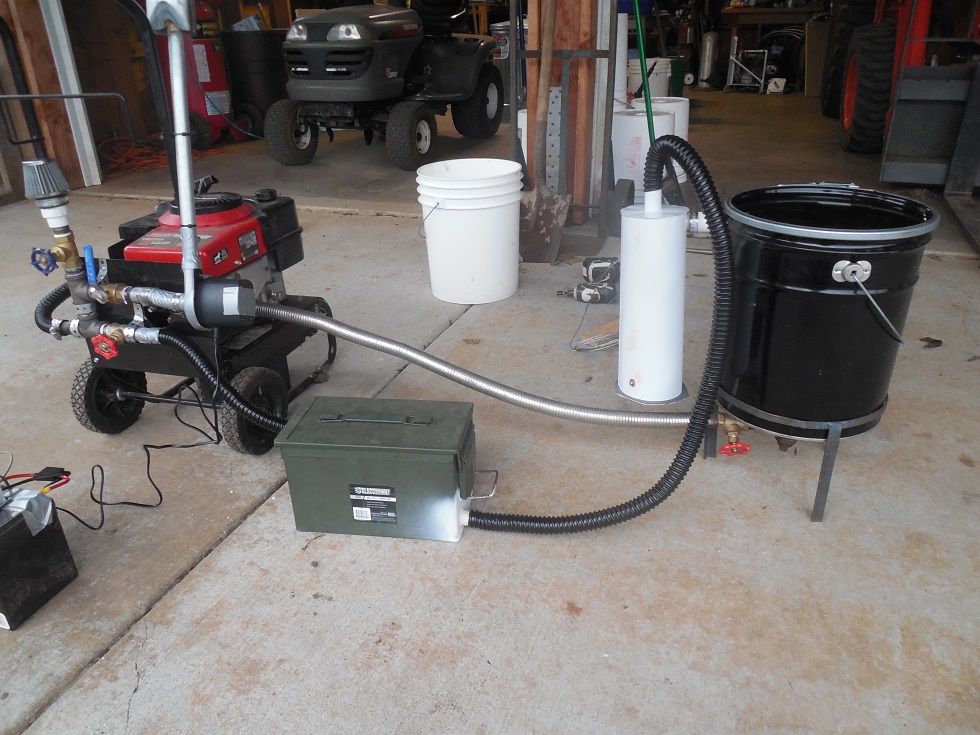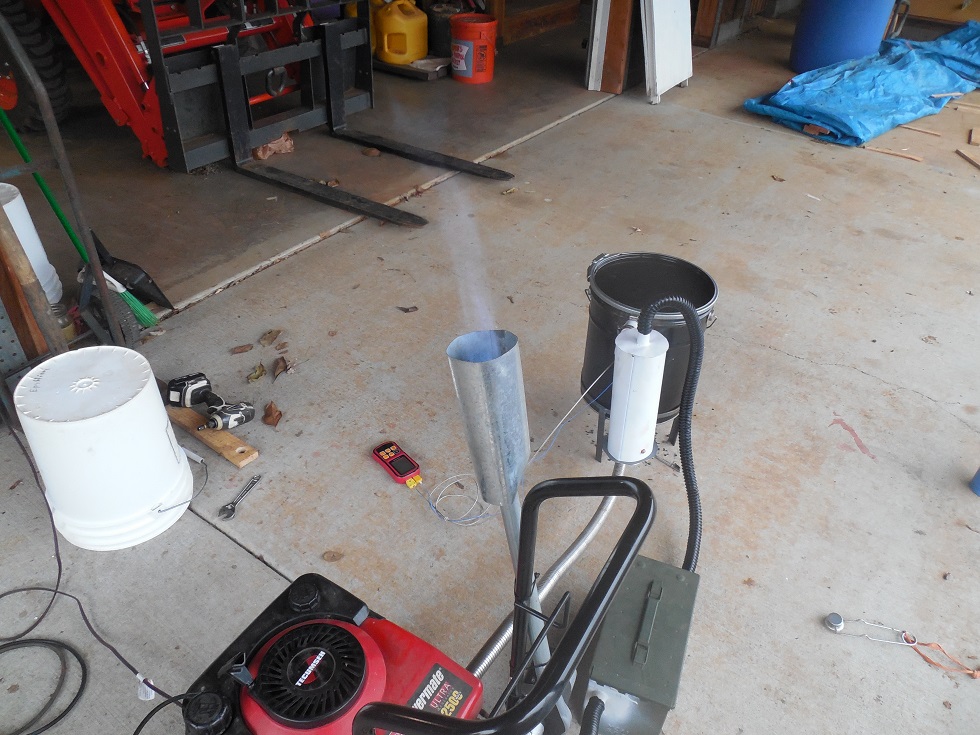Alright, all this talk about Argos 2019 has me feeling like I need to get a project going so that if I were to make it, I would have something to talk to you all about!
I have decided to charcoal gassify a little dinky 2k generator set I picked up on craigslist. It ran fine on gasoline, and had plenty of juice to run my backup battery charger for my off-grid batteries.
On my last project I was having trouble keeping a flare going, so I am going to really try and be more on top of air leaks. I got a little 12volt blower, and also ordered a DC speed controller for it to dial in the right suction. Once I get things plumbed up I will try running it in reverse and check all the fittings with soapy water.
I also had a lot of condensation forming in my pipes and filter, possibly due to our 90%+ RH this time of year. To address that, I put together a very thin walled “cyclone” in the hopes that I could get some of the vapor to drop out before getting to the filter.

The inlets are 1" od tube, and the body is made from a 12" section of crimped 4" single wall duct. The top is just a piece of galv roll flashing that I ground the zinc off of and brazed (very carefully) to the duct. It did warp a bit.
The bottom is heavier gauge sheet, with a piece of rubber-fiber gasket material.

There is a threaded hole in the retaining bar, which holds the bottom in place. I will put some RTV in the bolts and such, and test the crimped seam for leaks.
I am not sure if the geometry of this thing will allow it to catch any dust, but If it does I will consider it a bonus.

I also finished a new intake tube and bolted that to the outside of the carb. I put a shut-off in the fuel line so that I can still use it on gas if I wanted.
I am going to reuse the same air intake/ mixing manifold that I built for my last project, but I have not gotten it mounted yet. More to follow!



 I suppose I am in no real hurry, and pretty soon I will be an expert on all the ways to make a charcoal gasifier that doesnt work!
I suppose I am in no real hurry, and pretty soon I will be an expert on all the ways to make a charcoal gasifier that doesnt work!

